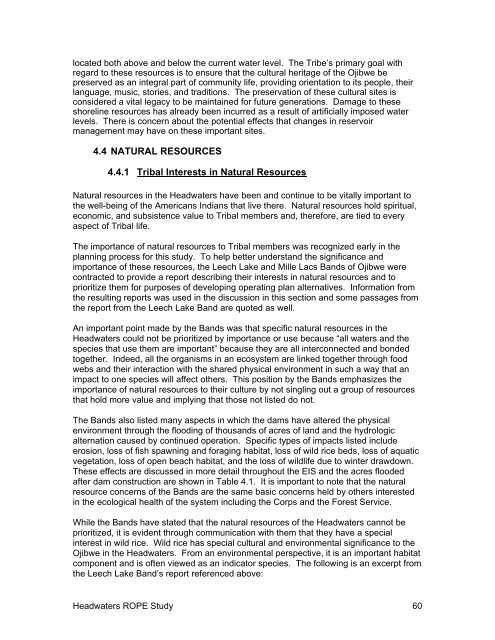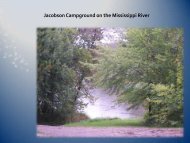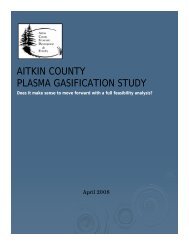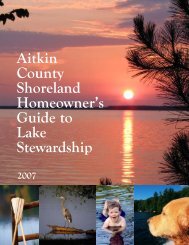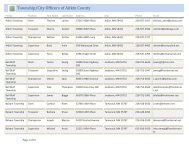Chapter 4: Affected Environment - Aitkin County Government
Chapter 4: Affected Environment - Aitkin County Government
Chapter 4: Affected Environment - Aitkin County Government
- No tags were found...
You also want an ePaper? Increase the reach of your titles
YUMPU automatically turns print PDFs into web optimized ePapers that Google loves.
located both above and below the current water level. The Tribe’s primary goal withregard to these resources is to ensure that the cultural heritage of the Ojibwe bepreserved as an integral part of community life, providing orientation to its people, theirlanguage, music, stories, and traditions. The preservation of these cultural sites isconsidered a vital legacy to be maintained for future generations. Damage to theseshoreline resources has already been incurred as a result of artificially imposed waterlevels. There is concern about the potential effects that changes in reservoirmanagement may have on these important sites.4.4 NATURAL RESOURCES4.4.1 Tribal Interests in Natural ResourcesNatural resources in the Headwaters have been and continue to be vitally important tothe well-being of the Americans Indians that live there. Natural resources hold spiritual,economic, and subsistence value to Tribal members and, therefore, are tied to everyaspect of Tribal life.The importance of natural resources to Tribal members was recognized early in theplanning process for this study. To help better understand the significance andimportance of these resources, the Leech Lake and Mille Lacs Bands of Ojibwe werecontracted to provide a report describing their interests in natural resources and toprioritize them for purposes of developing operating plan alternatives. Information fromthe resulting reports was used in the discussion in this section and some passages fromthe report from the Leech Lake Band are quoted as well.An important point made by the Bands was that specific natural resources in theHeadwaters could not be prioritized by importance or use because “all waters and thespecies that use them are important” because they are all interconnected and bondedtogether. Indeed, all the organisms in an ecosystem are linked together through foodwebs and their interaction with the shared physical environment in such a way that animpact to one species will affect others. This position by the Bands emphasizes theimportance of natural resources to their culture by not singling out a group of resourcesthat hold more value and implying that those not listed do not.The Bands also listed many aspects in which the dams have altered the physicalenvironment through the flooding of thousands of acres of land and the hydrologicalternation caused by continued operation. Specific types of impacts listed includeerosion, loss of fish spawning and foraging habitat, loss of wild rice beds, loss of aquaticvegetation, loss of open beach habitat, and the loss of wildlife due to winter drawdown.These effects are discussed in more detail throughout the EIS and the acres floodedafter dam construction are shown in Table 4.1. It is important to note that the naturalresource concerns of the Bands are the same basic concerns held by others interestedin the ecological health of the system including the Corps and the Forest Service.While the Bands have stated that the natural resources of the Headwaters cannot beprioritized, it is evident through communication with them that they have a specialinterest in wild rice. Wild rice has special cultural and environmental significance to theOjibwe in the Headwaters. From an environmental perspective, it is an important habitatcomponent and is often viewed as an indicator species. The following is an excerpt fromthe Leech Lake Band’s report referenced above:Headwaters ROPE Study 60


